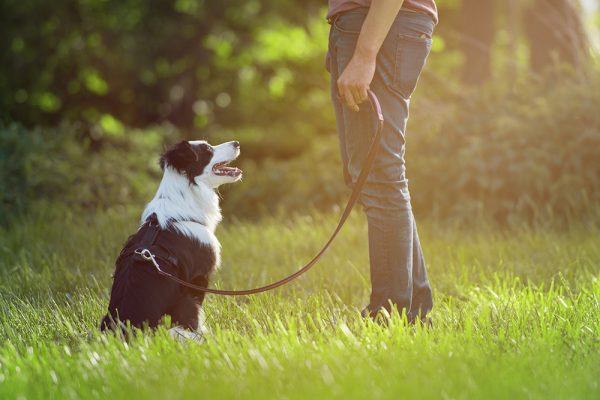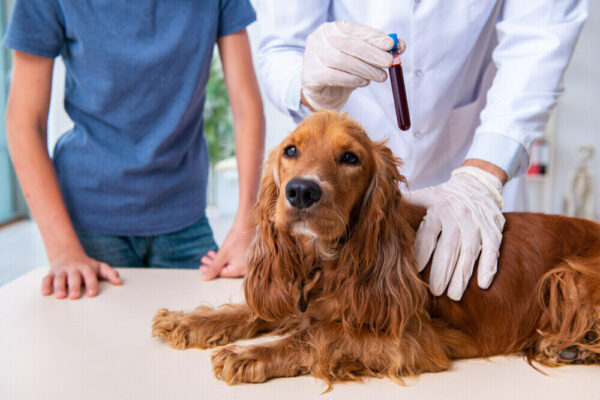In this article
View 6 More +The Labrador Retriever is consistently one of the most popular dog breeds to exist year after year. The yellow variation is just that—a coat color that makes up one of the three traditional Labrador colors. This beautiful shade can vary from a creamy white to nearly golden, depending on the genetic combo.
If you love the yellow lab and want to know more about the breed itself, we thought we’d give you a little background. This family dog is a superhero among canines and has a long history. Let’s uncover more about this famous breed to deepen your appreciation for your dog—or just the breed itself.
Breed Overview
Height:
22.5–23.5 inches
Weight:
55–80 pounds
Lifespan:
11–13 years
Colors:
Yellow
Suitable for:
Service and guide work, family pets, military training, hunting
Temperament:
Loyal, intelligent, kind, friendly
Most commonly, you see Labs that have a black or chocolate coat. The black color variation is certainly the most popular, as most genetic combinations give way to this shade. However, yellow trumps all, as the “eee” genes can switch off the “bee” genes that make the other colors.
While rarer, the yellow Lab is still pretty easy to come by. If you are interested in a yellow Lab specifically, you’re sure to find lots of puppies in your state or region. Do some homework and select the best breeder to ensure you get a quality, healthy puppy.
Yellow Labrador Retriever Characteristics

The Earliest Records of the Yellow Labrador Retriever in History
The Labrador Retriever was developed on the island of Newfoundland, in Canada. These dogs stemmed from the St. John’s dog, which is extinct today. During the 1970s, only two surviving St. John’s dogs were discovered; unfortunately, they were both boys. The breed could never be revamped, but they have laid the foundation for the Labrador Retrievers you know and love today.
How the Yellow Labrador Retriever Gained Popularity
The Labrador Retriever gained popularity due to its high trainability and amiable character. They quickly went from hunting companions into a variety of other roles, including family pets. The yellow color has always been in the breed’s genetic potential—it is not a new or developing color like, say, the controversial silver Labrador.
These dogs naturally love the water, so it’s no wonder they helped fishermen hunt waterfowl, traipsing through swampy areas and jumping off boats to gather the game. But their nobility and loyalty lent an effortless transition from hunter to house pet.
Formal Recognition of the Yellow Labrador Retriever
Labs were not formally recognized until several years after their development. This breed started to rise in the 1830s after the St. John’s Dog was introduced from British trading ships. The Lab was first recognized in England, gaining the approval of the Kennel Club in 1903.
Because the Lab’s impressive makeup caught the attention of American hunters, the United States followed suit nearly a decade later. The Lab was formally recognized by the American Kennel Club in 1917, with yellow being one of the breed standard colors.


The Top 5 Unique Facts About the Yellow Labrador Retriever
If you want to know more about this ideal canine, we have five top facts about the breed itself. Remember that color doesn’t influence anything about the dog itself, and all Labs share similar personality characteristics.
1. Labs are made for the water.
The Labrador Retriever is a natural in the water. Coming from Newfoundland, these dogs often spent time with fishermen and hunters, which required them to acclimate to the water. This trait runs deep in their bloodline, making them an excellent dog for swimming adventures—they even come equipped with webbed feet.
If you have a Lab, you know how they can’t wait to run into sprinklers or take a dip in the family pool. Water games and swimming can be two mentally stimulating and physically demanding exercises that your Lab will love.
2. Color doesn’t define character.
Labs come in three main colors: yellow, chocolate, and black. Despite there being three distinct looks, there is no variation in personality based on color alone. However, people might be less aware of two different groups of Labs. One group is the English Labrador and the other is the American Labrador.
The American Labradors tend to be a little slenderer and more energetic. The English Labradors tend to be more relaxed with a stockier build.

3. Labs have a long list of talents.
Labs have a broad selection of skills. You can train them to do pretty much anything. It’s no wonder these dogs consistently remain among the three most popular dog breeds yearly. Because of their trainability and temperament, they make fabulous service and emotional support animals.
They are also commonly used for police work or search and rescue—even in the water. For traditional purposes, they still make exquisite hunters, too.
4. Labs are high-energy.
Labs are extremely high-energy dogs that require an adequate amount of physical activity. They will thrive on outdoor games, so always ensure you have access to the outside daily. They greatly benefit from daily walks, dog park visits, and long trips, but they need a fenced-in backyard to prevent them from wandering.
On an average day, your yellow Lab would need approximately 90 minutes of exercise. Because of their high activity level and willingness to learn, they make great candidates for all levels of obedience training.
5. They make great sporting dogs.
Labrador Retrievers were built for agility and physical exertion. These dogs will quickly impress you with your ability to follow commands and instinctually do what the breed was meant to do. They typically play sports like diving, agility, flyball, and flying disc.
Most prefer to have their dog as a companion, but if you’re interested in advanced training, check out how to go about the process near you.


Does the Yellow Labrador Retriever Make a Good Pet?
Labrador Retrievers in general typically make fantastic companion animals regardless of their color. They are incredibly connected with their family members and tend not to choose a favorite. They get along with all home members and can even do very well with cats when they are raised together.
That is not to say that caution isn’t recommended when you have one of these dogs if you have smaller or vulnerable pets. These dogs are bred to be hunting experts, and most of them have at least a moderate prey drive. Labs might not always be the best candidate if you have poultry or other small farm animals. They might also take a snap at a hamster, guinea pig, or other small house pets, so make sure you are separating the two correctly.
Labs get along extremely well with other dogs and prefer having another canine companion. These dogs are energetic and playful, creating perfect activity equality for children. Not only can Labs get along well with every member of the household, but they also do great outside of the home. If you need a service companion or workforce dog, this incredibly intelligent canine can meet your expectations. Labs are often skilled at advanced training of some kind due to their high trainability and work ethic.

Conclusion
Yellow is simply a coat color variation of the Labrador Retriever. It makes no difference as far as the breed goes. It is one of three accepted colors, the other two being chocolate and black. The yellow Labrador Retriever is certainly a beautiful dog and, luckily, pretty standard.
So, if you’re interested in bringing this breed home, check local rescues and shelters for yellow Lab dogs of all ages. Or, if you feel like starting from square one, search for a licensed, reputable breeder with a history of successful litters. Steer clear of puppy mills and backyard breeders to avoid potential issues.
Featured Image Credit: sanjagrujic, Shutterstock


















